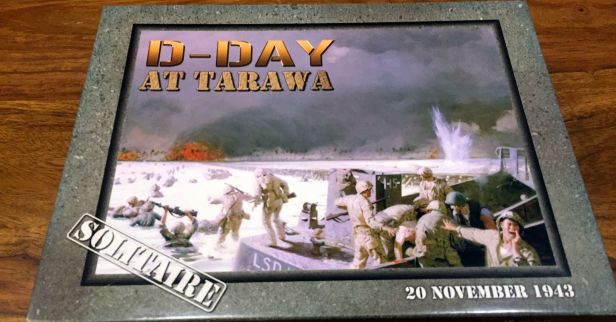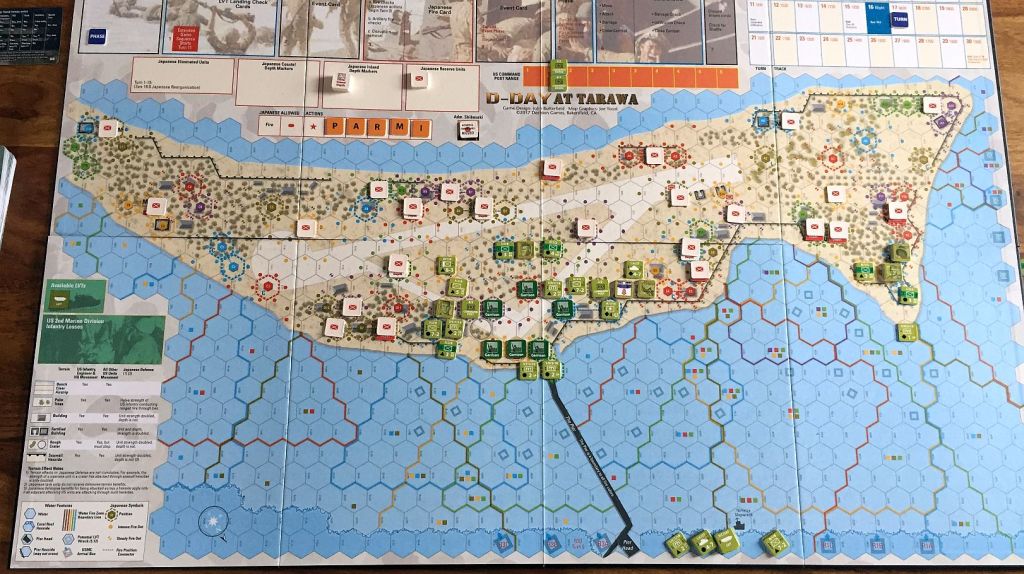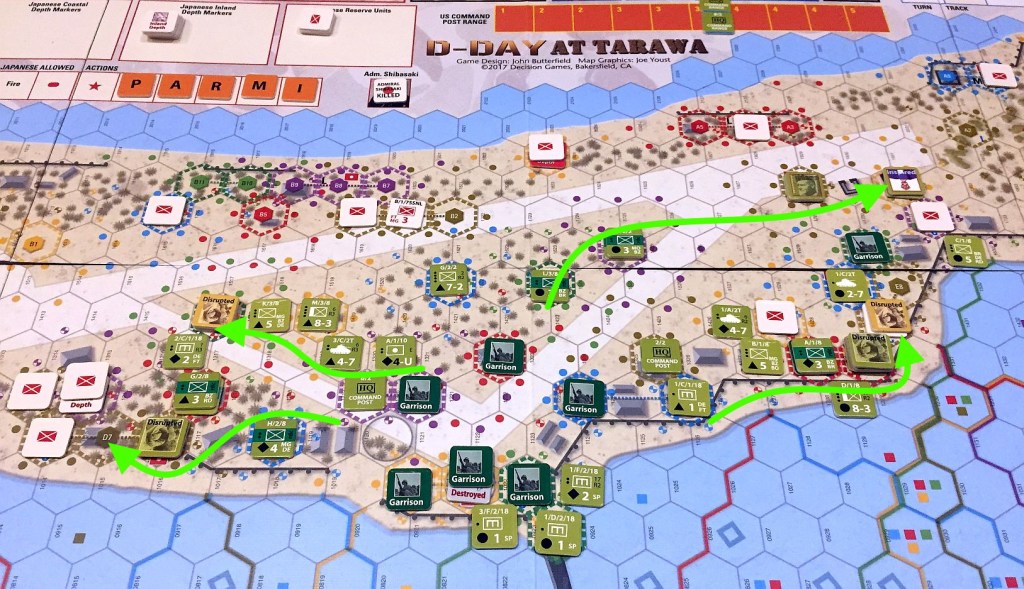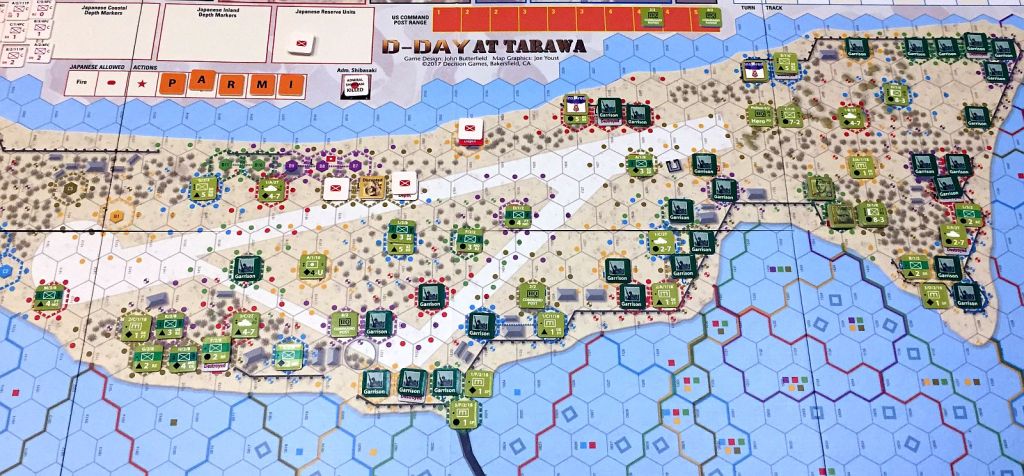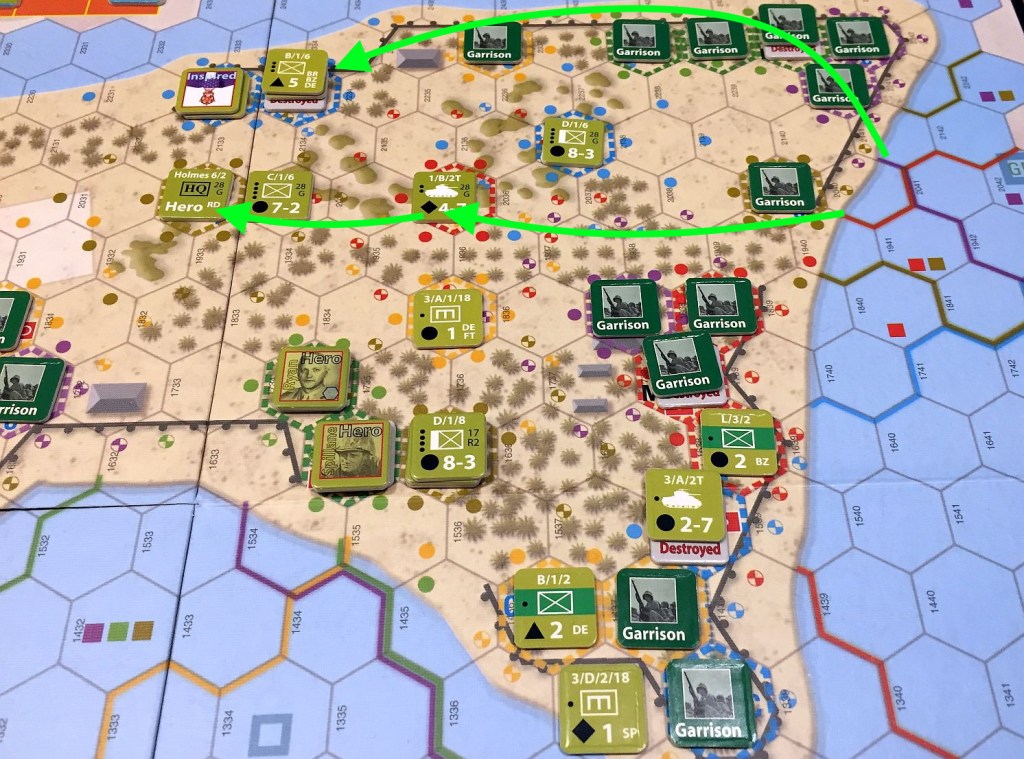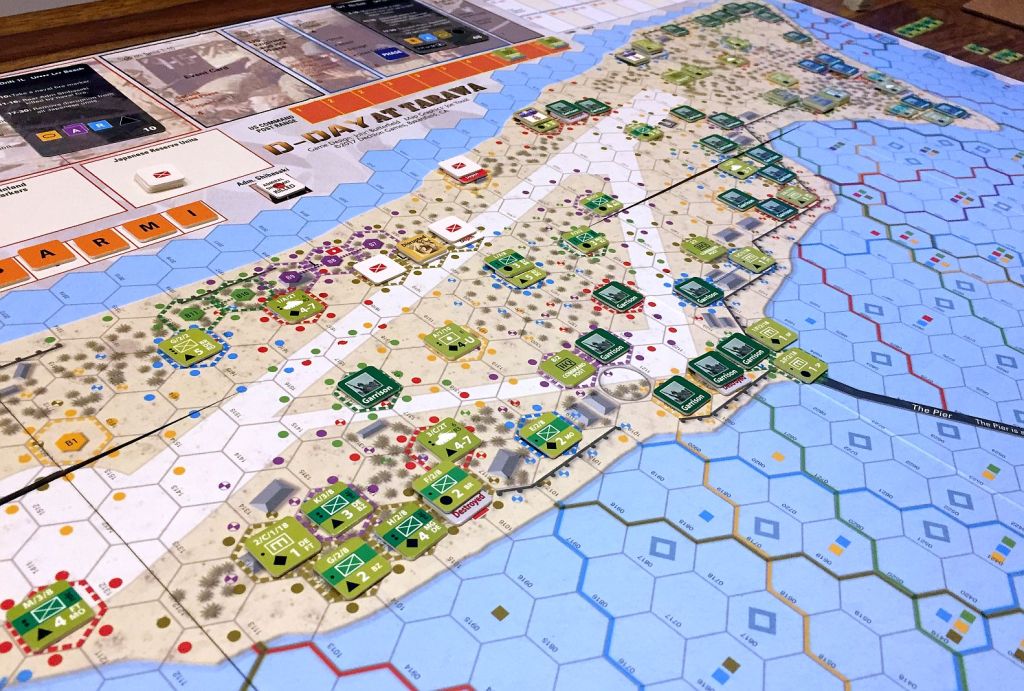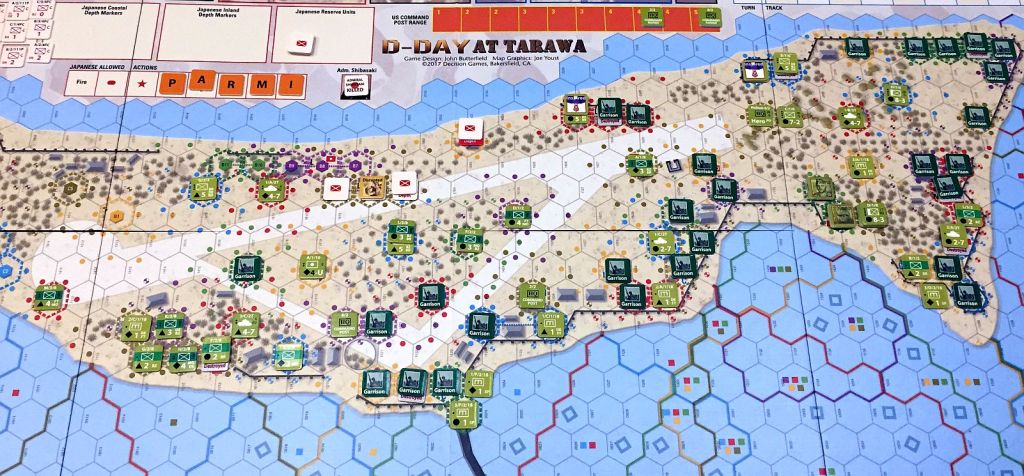As you probably know, I am devoted fan of John H. Butterfield designs. I focus on couple of titles like D-Day at Omaha Beach or SpaceCorp, and recently started to discover D-Day at Tarawa – great sequel to Omaha, which takes place in Pacific theater. All those games are pretty procedural, with clear actions designed for the Artificial Intelligence (Bots). I really like the way cards drive the Competition / Germans / Japanese actions – you do not have to look up the possible actions in pretty complicated flowcharts. Still, be advised that – especially in case of D-Day – you will face enormously difficult task to deal with. Those titles and its scenarios really try to depict the hardships, misfortunes and difficulties of the landings. But believe me, the joy of achieving even smallest successes is great.
Today I would like to present my already third contact with Tarawa game, this time scenario describing second day of invasion – “The 21 November 1943”.
My D-Day series articles: D-Day at Omaha Beach – “Easy Fox” scenario D-Day at Omaha Beach – yet one more time “Easy Fox” scenario D-Day at Omaha Beach – “The First Waves” scenario D-Day at Tarawa – “The First Waves” scenario D-Day at Tarawa – “The 20 November 1943” scenario
The Battle of Tarawa
I like to play the historical boardgames with proper context so let me provide couple of words of background. By the way, game contains fantastic leaflet regarding the invasion, with great maps. Another point to stress about this title!
The Battle of Tarawa was a battle in the Pacific Theater of World War II that was fought on 20–23 November 1943. It took place at the Tarawa Atoll in the Gilbert Islands, and was part of Operation Galvanic, the U.S. invasion of the Gilberts. Nearly 6,400 Japanese, Koreans, and Americans died in the fighting, mostly on and around the small island of Betio, in the extreme southwest of Tarawa Atoll.
The Battle of Tarawa was the first American offensive in the critical central Pacific region. It was also the first time in the Pacific War that the United States had faced serious Japanese opposition to an amphibious landing. Previous landings met little or no initial resistance, but on Tarawa the 4,500 Japanese defenders were well-supplied and well-prepared, and they fought almost to the last man, exacting a heavy toll on the United States Marine Corps.
The Game
We have the historical background so now some explanation about the game itself – which I hope will be useful both to new fans of D-Day series but also to those who played Omaha Beach and consider the Pacific editions. So Tarawa is based on John Butterfield’s D-Day at Omaha Beach system and presents fighting at platoon and company scale in solitaire mode. You command the invading American forces against dug-in Japanese defenders, which are controlled by the game system. Tarawa covers the landings on Betio Island in November 1943, and the operations of the US 2nd Marine and 27th Infantry Divisions to clear it – the first heavily contested landing of the Pacific War. The battle for the tiny Island raged for four days and, when it was finally over, fewer than 200 of the 5,000 Japanese defenders remained alive.
As I played already the initial two scenarios – The First Waves and The 20 November 1943, the time has come for third – The 21 November 1943. It covers the second day of the invasion (Turns 17-30) and takes up to four hours to play. This scenario is great for players already familiar with D-Day at Tarawa and brings so much needed variation, increasing the game replayability enormously.
The Session
Equipped with the knowledge and experience how deadly the well dug-in Japanese can be, I started to set-up the game. As this is already second day of invasion, I have possibility to place some of my forces on the map – usually within 1 or 2 hexes of the pivotal points. That is great as again allows for so much needed variation and replayability. Let me present short session report in form of slide-show and then some observations how it went:
Below close-ups of the final situation. I am attaching two – first, presenting the picture of the map after Turn 30 – just open this in new window and watch the details:
I am also presenting grey-scale map with clear extent of my forces penetration, marking the occupied positions – those giving VPs and those which are not (as they are in Field of Fire of enemy – actually – this time there were not such). I hope you too will appreciate my picture-rich reports 🙂
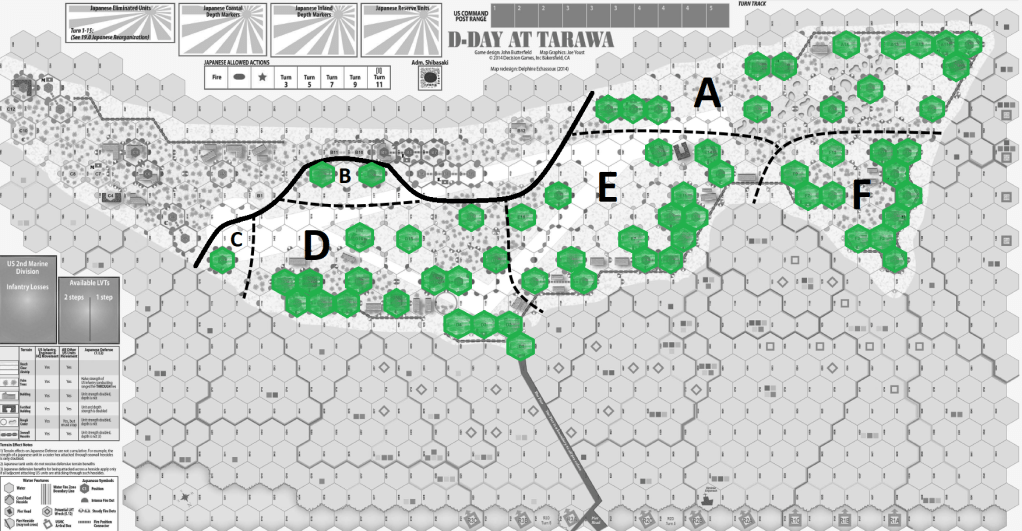
The results surpassed all my expectations – first time I won the game!
Summary
Playing D-Day at Tarawa is extremely enjoyable experience especially when you finally can achieve the victory! The fundamentally important event of the game was expedited reinforcements landing on Beach Green. That actually helped enormously to break all the enemy resistance in sections A & F. Also I think that this scenario is probably one of the most enjoyable because if even unsuccessful, you have much more control over your forces and can achieve a lot local successes. One more challenge is still before me – the full, 2 day scenario. It will come!
Highly recommended! More session reports will come!



